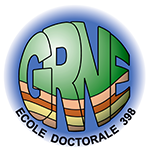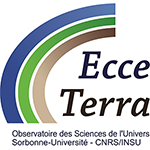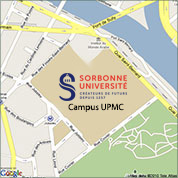Séminaire ISTeP - Sarah Roeske
(UC Davis)
Growth and modification of the Alaskan crust by convergent margin processes
Alaska is a complexly deforming region of composite crustal elements at the northwest corner of the North American craton. Tectonic understanding of Alaska is hampered by sparse geologic mapping and geophysical data coverage due to poor exposure and difficult logistics.
Two major continental strike-slip systems, the Tintina in the north and the Denali to the south, divide the state into 3 broad sections, North, Central, and South; each region’s crust has experienced subduction, accretion and collision. North Alaska, north of the Tintina fault, contains a partially preserved record of subduction/accretion during an arc-continent collision. Some of the thickest crust in Alaska occurs in the Brooks Range, which is thought to have formed during Mesozoic large-scale crustal shortening associated with this collision. Central Alaska, south of the Tintina and north of the Denali fault systems, experienced continent-continent collision in the north and arc-plateau collision in the south. The continent-continent collision was followed in Alaska by extension that resulted in significant crustal thinning, exhuming mid-crustal rocks and resulting in crust between 25-30 km thick in interior (central) Alaska north of the Denali fault system. South Alaska, south of the Denali fault system, has undergone intermittent subduction since the late Paleozoic and starting in late Triassic developed a relatively well-preserved arc, forearc, and accretionary record that continue today. Locally thick (~45 km) crust underneath the active Wrangell volcanic belt is not easily explained by arc magmatic processes. Possible scenarios for this thick relatively strong region of crust include arc development on ocean plateau crust. Low-angle subduction and ongoing collision of a small ocean plateau microplate in the southeast corner of Alaska drives much of the active deformation seen today in the southern third of the state.
31/01/2014 à 12h30, Salle Fourcade
Egalement dans la rubrique
Chiffres clés (Mars 2025)
L'ISTeP comprend 131 membres dont :
Permanents (66)
- Professeurs : 17 (+2 PAST)
- Maîtres de conférence : 26
- Directeurs de recherche CNRS : 1
- Chargés de recherche CNRS : 1
- ITA : 19
Personnels non permanents (65)
- Collaborateurs bénévoles / émérites : 17
- Chaire de professeur junior : 1
- Enseignants-chercheurs contractuel : 2
- 1 MCF accueil en délégation
- ATER et Post-Docs : 9
- Doctorants : 32
- ITA-BIATSS : 3





